
Tea industry: Prospects & challenges
Mabroor Mahmood | Wednesday, 23 November 2022
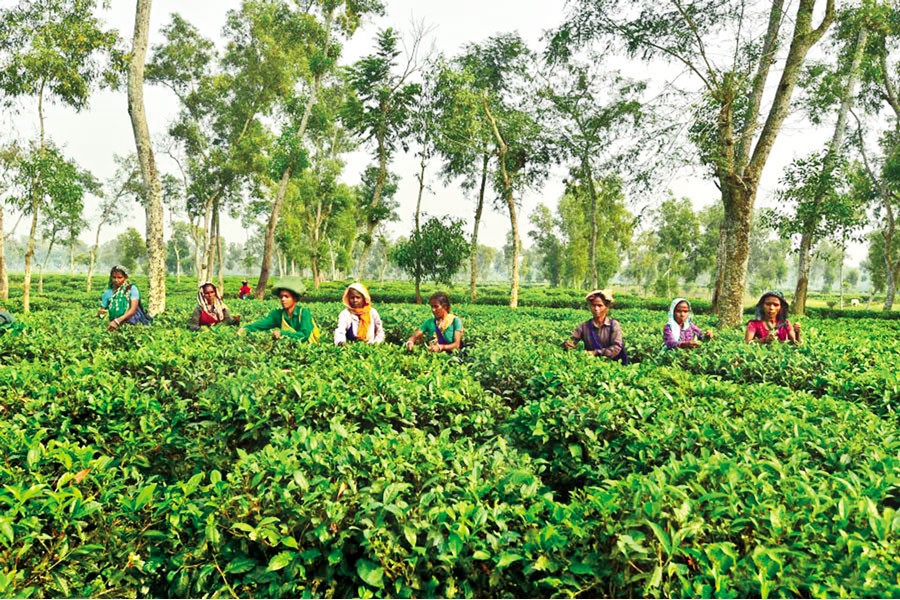
 Very recently when the tea workers took to the street demanding a raise in wages, it quickly grabbed the attention of the national media. Stories of their plights and sorrows were all on the front pages of the newspapers and aired in the prime time of the news channels. The news that the tea workers earn only 120 Taka a day made tea planters 'monsters' overnight. People started to accuse the tea planters of showing an 'imperialistic' attitude and stood against them campaigning for meeting the demand of the tea workers.
Very recently when the tea workers took to the street demanding a raise in wages, it quickly grabbed the attention of the national media. Stories of their plights and sorrows were all on the front pages of the newspapers and aired in the prime time of the news channels. The news that the tea workers earn only 120 Taka a day made tea planters 'monsters' overnight. People started to accuse the tea planters of showing an 'imperialistic' attitude and stood against them campaigning for meeting the demand of the tea workers.
This event created an unprecedented mass level stir about the tea industry in general. The tea industry has been operating in Bangladesh for over a hundred years now, and since most of the tea estates are located in the Sylhet region, the dwellers in the capital city Dhaka were not much aware of what was happening there. So this protest actually gave a golden opportunity to make people aware of the problems and prospects of the tea industry in Bangladesh.
I am only taking this opportunity through writing in the Financial Express to tell you something about the industry, which you might not know. In this article, I will tell you in brief about the country's tea industry, about the global tea industry dynamics and where Bangladesh stands in the global landscape. I will also talk about various challenges that the tea industry is facing at this moment. Let me start with an overview of the current status of the tea industry in Bangladesh.
STATE OF BANGLADESH'S TEA INDUSTRY: Tea is mainly grown in hilly regions of Sylhet and Chattogram. Very recently initiatives were taken to grow tea in the flat lands in Panchagarh, which is near Darjeeling in India. Although people in Bangladesh have been cultivating tea for over a hundred years, the number of tea establishments did not grow much over time. According to Bangladesh Tea Board (BTB), there are 167 tea establishments, of which 129 are permanently registered as "Tea Estates", 31 are permanently registered as "Tea Gardens", and remaining 7 are temporarily registered as tea gardens.
"Tea Estates" are the establishments, which have the integrated facilities for cultivation, processing and marketing of tea with associated workers' basic welfare facilities available. On the other hand, "Tea Gardens" are the establishments having an area of more than 25 acres, which do not have these integrated facilities. The following table (Table 1) provides the geographical distribution of these tea establishments: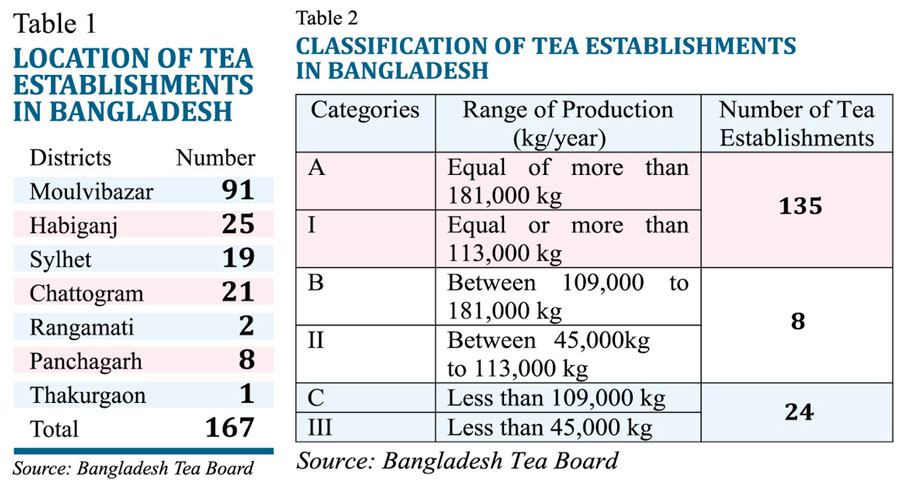 The total land area under tea cultivation in Bangladesh is 2,79,506 acres, of which the largest cultivation area is in Moulvibazar -- 1,56,192 acres. This is almost 55.88% of total tea cultivation area in the country. Amongst all the tea establishments, Balishira Tea Estate in Moulvibazar is the largest with a total land area of 8,653 acres, while Khedarmara Tea Garden of Rangamati is the smallest with 34 acres.
The total land area under tea cultivation in Bangladesh is 2,79,506 acres, of which the largest cultivation area is in Moulvibazar -- 1,56,192 acres. This is almost 55.88% of total tea cultivation area in the country. Amongst all the tea establishments, Balishira Tea Estate in Moulvibazar is the largest with a total land area of 8,653 acres, while Khedarmara Tea Garden of Rangamati is the smallest with 34 acres.
Bangladesh Tea Board (BTB) classifies all tea establishments under different categories on the basis of their tea production level. For Sylhet, Moulvibazar and Habiganj districts, tea establishments are classified under "A", "B", and "C" categories, and those located in Chattogram and other districts are classified under "I", "II" and "III" categories. The following table (Table 2) provides the description of each category of tea establishments:
According to Bangladesh Tea Association (BTA), Bangladesh produced 96.51 million kg of tea during 2021, which was 11.71% higher compared to 2020. During the last ten years, tea production in Bangladesh increased by 54.27% as shown in the Graph (Graph 1) below:
According to the rules of the Government, tea establishments are required to sell their production mainly through auction centres. At present, there are two tea auction centres; one in Chattogram and another in Srimangal. Very recently initiatives have been taken to launch a new auction centre in Panchagarh.
GLOBAL TEA INDUSTRY: According to Indian Tea Board, the total global production and consumption of tea during 2020 were 6,269 million kg and around 5,879 million kg respectively. China was the largest producer of tea with 2,986 million kg, followed by India with 1,258 million kg. China's share in global tea production was 48%, almost half of total global production, while India's share was 20%. Other two major tea producers are Kenya (570 million kg) with a 9% global share and Sri Lanka (278 million kg) with a 4% global share.
In exports, Kenya is the market leader with total yearly export of around 519 million kg, accounting foe 28% of global exports, followed by China with 349 million kg, accounting for 19% of global export (Table 3).
During 2020, Sri Lankan tea varieties fetched the highest market prices with USD 3.4/kg, while Indian varieties stood second with USD 2.49/kg. Bangladeshi varieties were next in terms of price with USD 2.05/kg. From the table below (Table 4), this is also evident that Indian and Sri Lankan varieties fetched higher prices in 2020 compared to 2019, while other varieties (Bangladesh, Kenya and Malawi) were lower in prices during the corresponding periods.
According to Food and Agricultural Organization (FAO), global per capita tea consumption increased by 2.5% annually over the last decade. Amongst the most tea consuming countries, Turkey comes on top with around 3.16 kg per year, while Ireland stands second with 2.19 kg per year.
In terms of per capita consumption, the next most tea consuming countries are: the United Kingdom, Iran, Russia, Morocco, New Zealand, Chile, Egypt and Poland. It is interesting to note that none of the largest tea producing countries is a famous consumer of tea, at least in terms of per capita consumption. For Bangladesh, a notable producer of Black Tea, the per capita consumption is approximately 0.59 kg per year, which is very low compared to the above-mentioned countries.
PROSPECTS AND CHALLENGES: The tea industry in Bangladesh is facing multiple challenges at this moment. Tea is a labour-intensive industry and its growth is highly dependent on climate. If the climate is favourable, the tea sector sees bumper crops, while if there is drought, the production slumps. So unpredictability of production and income is something that is always attached to this industry.
In order to grow, process and market tea, tea estates need abundant supply of local labour on a continuous basis. During the last few years, the wages of tea labourers increased gradually, impacting the cost of production negatively. According to Bangladesh Tea Association (BTA), the wages of labourers increased from Tk 69 per day to Tk 170 per day -- an increase of 146.37% during 2010-2022.
Besides wages of labourers, the tea sector also witnessed an increase in prices of all other raw materials, such as, electricity, fertilizer, pesticides, etc. The cost of production at tea estates largely depends on the total size of the estate. Large tea estates have relatively low cost of production, while the smaller ones have high costs. Anecdotal information indicates that for a mid-sized tea estate, the production cost (including operating costs and financial charges) of tea was approximately Tk 200/kg before the wage hike. Now with the new labour wage structure, this cost has increased even further.
However, despite the gradual increase in cost of production, the auction prices of tea did not witness any increase, rather a gradual reduction over the years. The downward sloping red trend line in the graph below shows that from January 2016 till October 2022, the monthly average auction price of tea actually decreased over the years in the Chattogram auction market.
During these years, there was inflation every year, however, average auction prices of tea did not increase correspondingly, which gradually eroded the financial strength of the tea planters. Therefore, with this range of tea prices in the auction market, it is quite difficult for an average tea estate to make any profit.
If we plot the production and consumption pattern of tea in Bangladesh on a long-term horizon, we may find some clues to such depressed average price of tea over the years. The following graph shows (Graph 3) the production and domestic consumption of tea during the last few decades. It shows that the gap between production and consumption gradually reduced over the years, and now, the total domestic consumption of tea is almost equal to the domestic production. Thus there is no strong rationale as to why the average auction price of tea gradually decreased over the years as shown in the previous graph.
Conventional wisdom says if the demand for any product rises, the price will also increase. However, the above two graphs indicate two contrasting situations, which are quite misleading. Therefore, one needs to think critically to understand what is actually going on in the tea industry. 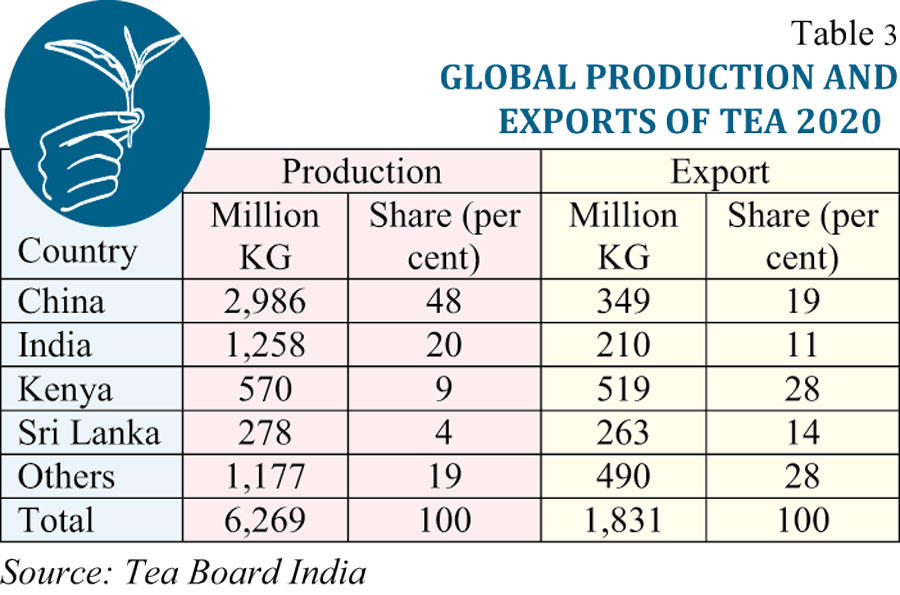 Bangladesh's export of tea witnessed a gradual deceleration during the last decade as the domestic consumption grew over time. As a result, there was not much surplus of tea for export. The following graph (Graph 4) depicts this situation. Therefore, if the per hectare yield is raised going forward, Bangladesh's tea industry will need to focus more on increasing domestic tea consumption as well as explore export opportunities. At present, a number of local tea companies, such as, Abul Khair Consumer Products Limited, Kazi & Kazi Tea Estate Ltd., Halda Valley Food & Beverage Ltd., and M.M. Ispahani Limited are the major tea exporters.
Bangladesh's export of tea witnessed a gradual deceleration during the last decade as the domestic consumption grew over time. As a result, there was not much surplus of tea for export. The following graph (Graph 4) depicts this situation. Therefore, if the per hectare yield is raised going forward, Bangladesh's tea industry will need to focus more on increasing domestic tea consumption as well as explore export opportunities. At present, a number of local tea companies, such as, Abul Khair Consumer Products Limited, Kazi & Kazi Tea Estate Ltd., Halda Valley Food & Beverage Ltd., and M.M. Ispahani Limited are the major tea exporters.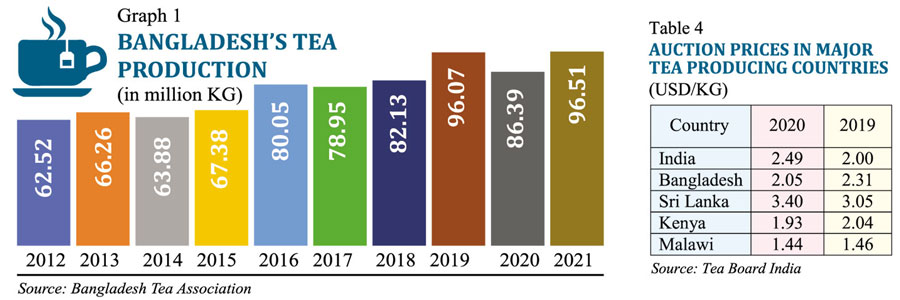 Most of the tea is sold at the Chattogram Auction Market as this is the largest and oldest tea auction centre of the country. However, as stated earlier, most of the tea estates are located in Sylhet division, and thus, the tea estates are required to transport their tea to Chattogram for sale, requiring additional transportation cost. According to the auction market rule, the tea traders also need to be physically present in Chattogarm in order to buy tea from the auction market. This is a constraint for increasing the number of traders who may buy tea from the market.
Most of the tea is sold at the Chattogram Auction Market as this is the largest and oldest tea auction centre of the country. However, as stated earlier, most of the tea estates are located in Sylhet division, and thus, the tea estates are required to transport their tea to Chattogram for sale, requiring additional transportation cost. According to the auction market rule, the tea traders also need to be physically present in Chattogarm in order to buy tea from the auction market. This is a constraint for increasing the number of traders who may buy tea from the market.
The large lot sizes for tea sale also act as a constraint for small potential traders to enter the market. As a result, the number of active tea traders did not grow over time. According to an industry insider, at present the number of active tea traders is around 50, and it could be more if only online trading is introduced and the lot sizes are made smaller.
Tea estates require continuous investments in order to cultivate tea. Unlike other crops, tea requires at least four-five years to be matured enough for harvesting and during this period, the tea planters need to take continuous care of the plants by applying fertilizers, pesticides, irrigation, etc. that require continuous investments. For the tea planters, the only funding window that stays beside them during the entire process is Bangladesh Krishi Bank (BKB). BKB is literally the lifeline of tea estates in Bangladesh.
BKB provides credit lines as working capital support to pay for the wages, raw materials, and other administrative expenses on a regular basis. However, for additional investments that are required for maintaining the tea estates, BKB does not have any separate field level development financing scheme on favourable terms. Thus the tea planters need to rely on their recurring cash for such investments. But since the selling price of tea is always depressed in the auction market, not all tea planters are in a position to make such investments on a regular basis. As a result, a large number of tea estates have become "sick" due to this absence of fund flow.
This situation could be reversed if the tea planters were allowed to utilize their grant area for other commercial purposes. All the tea estates grow tea under a long-term lease arrangement with the Government, however, one of the conditions of such lease is that the area can be utilized only for cultivating tea. No other commercial establishments can be erected in these leased properties.
Our neighbouring country India, which is one of the largest tea producers in the world, has made some exceptions in this area already. Very recently in 2019, the Government of West Bengal formulated Tea Tourism and Allied Business Policy under which the Government allowed certain commercial activities within the premises of tea estates in order to raise the income as well as generate new employment. Under this policy, the Government permitted setting up of eco-friendly tea tourism facilities and other allied business activities within the tea garden premises.
Under the new policy, the tea estates can utilize maximum 15% of the grant area subject to a maximum of 150 acres for tea tourism and allied business activities. The allowable business activities include: tea tourism, plantation, animal husbandry, hydro-power, non-conventional energy resources, and social infrastructure and services. Under these broad categories, the tea planters can set up tourism resorts, wellness centres, schools, colleges, universities, medical/nursing colleges, hospitals, cultural/recreational & exhibition centres, horticulture, floriculture, medicinal plants, food processing units, packaging units, etc.
However, the Government of West Bengal has imposed the following rules that will have to be strictly followed by the tea estates:
• The total tea area cannot be reduced and local labour forces cannot be retrenched;
• Setting up of new infrastructure cannot alter the existing ecology of the tea estates and all environmental guidelines will have to be strictly complied with;
• 80% of the employment should be preserved for the local labour force and priority should be given to them while employing new human resources;
• Local residents cannot be removed from their land violating any law;
• No forest land can be utilized for such commercial activity without obtaining Government permission.
Since all the tea estates are dependent on the leased land for their tea cultivation, they need to renew the lease with the Government after certain time periods. At the beginning, the local administration scrutinises the intention of the tea planter and grants the lease for a short period after a through investigation.
However, renewing this lease for subsequent periods also needs to follow a time-consuming administrative process that increases the costs of the tea planters. Such drainage of resources could be significantly reduced if the lease renewal process could be made simpler and straight forward. A detailed investigation is quite justified at the beginning of the lease since the intention of the tea planter is not proven yet. However, once the tea estate is already established and it is growing and processing tea in reality, there is no justification of the local administration and the relevant ministry to follow the same due process for renewing the lease. 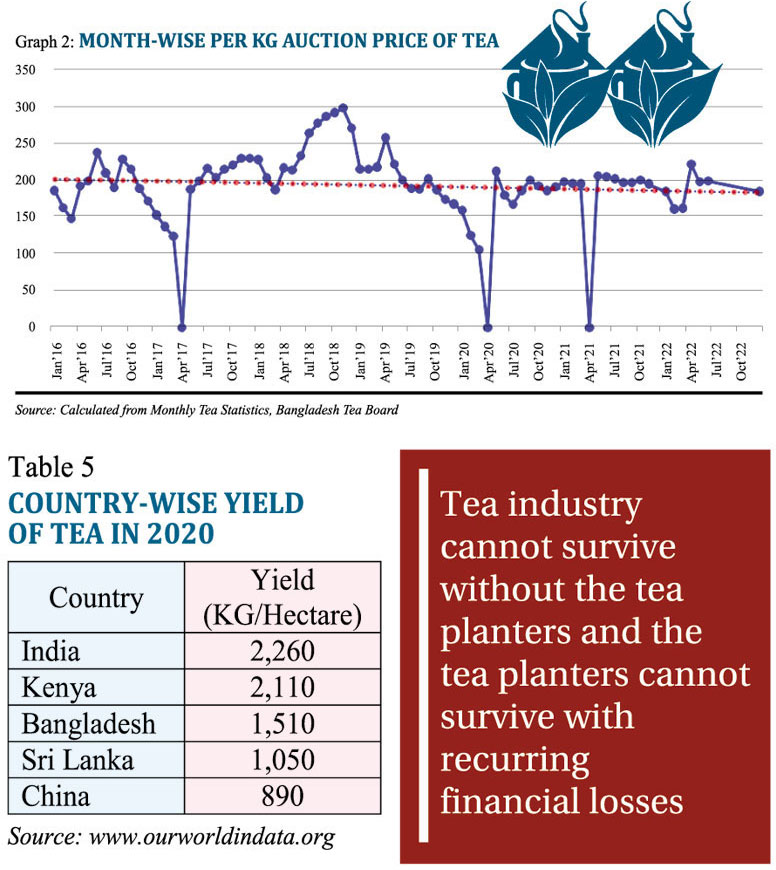 Drainage of valuable resources of tea planters through various litigations is another problem that all tea estates face. Tea garden owners are considered as "rich" by local inhabitants, and thus, there is always an effort from local muscle power to take advantage of this situation. They encroach upon land on a regular basis and claim the ownership of the leased property for which filing civil cases in the court is something that is a day-to-day affair for any tea planter. Every year, each tea estate has to allocate a large amount of resources for such unproductive litigations.
Drainage of valuable resources of tea planters through various litigations is another problem that all tea estates face. Tea garden owners are considered as "rich" by local inhabitants, and thus, there is always an effort from local muscle power to take advantage of this situation. They encroach upon land on a regular basis and claim the ownership of the leased property for which filing civil cases in the court is something that is a day-to-day affair for any tea planter. Every year, each tea estate has to allocate a large amount of resources for such unproductive litigations. 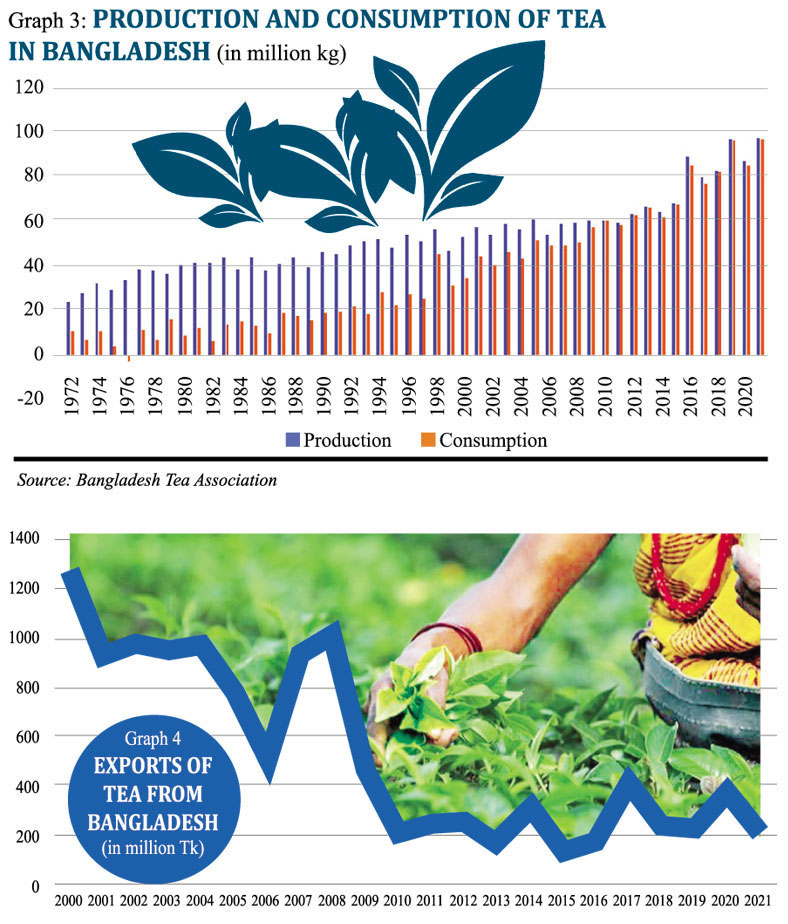 END NOTE: Despite all these challenges, tea planters have been growing tea year after year because this is something that is attached to their emotions. A large number of tea planters are second or third generation tea planters and they will continue growing tea no matter how much the return is. In terms of return and profitability, tea industry falls nowhere near any other leading industry, such as Readymade Garments, Textile, or IT. Despite such low return, there are hopes for rejuvenating the entire industry since there is a growing demand for tea all over the world, and Bangladesh's production as well as consumption are also showing promising trends. In this backdrop, in order to take the tea industry to a new level, my recommendations are as follows:
END NOTE: Despite all these challenges, tea planters have been growing tea year after year because this is something that is attached to their emotions. A large number of tea planters are second or third generation tea planters and they will continue growing tea no matter how much the return is. In terms of return and profitability, tea industry falls nowhere near any other leading industry, such as Readymade Garments, Textile, or IT. Despite such low return, there are hopes for rejuvenating the entire industry since there is a growing demand for tea all over the world, and Bangladesh's production as well as consumption are also showing promising trends. In this backdrop, in order to take the tea industry to a new level, my recommendations are as follows:
• Tea industry cannot survive without the tea planters and the tea planters cannot survive with recurring financial losses. Therefore, Bangladesh Tea Board (BTB) should undertake an assessment of the auction market mechanism to determine the actual competitiveness of the market. If the price of tea remains depressed due to some market anomalies, then this needs to be corrected on an urgent basis in order to save the tea industry.
• Quality tea production is not possible without happy tea workers. Although the wage of the tea workers has increased quite significantly very recently, the Government has to make sure through appropriate periodic monitoring mechanisms that all the minimum ancillary facilities for the tea workers are maintained by the tea estates.
• The Government of Bangladesh should invest in research and development to develop improved varieties of tea that can withstand weather shocks. There is also a need for developing high-yielding varieties without losing the local flavour.
• Besides raising the yield, there is also a dire need to raise the domestic consumption as well as exports. To meet these goals, Bangladesh Tea Board (BTB) should regularly run promotional campaigns through organizing events, conferences, exhibitions, etc. to encourage people to drink more tea.
• In order to promote export of tea abroad, Bangladesh Tea Board (BTB) should work closely with Export Promotion Bureau (EPB) to organise trade fairs in countries where per capita tea consumption is high. These trade fairs can be arranged with a special focus on tea in order to attract foreign buyers.
• Bangladesh Krishi Bank (BKB) should be provided with sufficient funds so that it can open new financing avenues for the tea sector development. Financing should be available not only for the working capital purposes, but also for the field level development at preferential rates. If needed, foreign funding agencies can be involved to increase the fund flow to the tea estates.
• In order to raise the income of the tea estates, the Ministry of Commerce should consider allowing tourism and allied commercial activities within the premises of tea estates under certain conditions. India's recent promulgation of the relevant policy may act as a reference in this regard.
• Hon'ble Prime Minister Sheikh Hasina has personal attachment to tea industry since her father Bangabandhu Sheikh Mujibur Rahman once served as the Chairman of Tea Board back in 1957. Such personal emotion of the PM was recently visible when she had intervened to meet the demand of the tea workers. This was very clear that without her intervention, this stalemate would not have been resolved.
I recommend that Bangladesh Tea Board (BTB) coordinate with the Prime Minister's Office (PMO) to organise at least one Cabinet Meeting in a magnificent bungalow of a lush Government-owned tea estate. This will radically create a mass level awareness about the entire tea industry within the government machinery, which is very important for ensuring steady and sustainable growth of the entire tea industry.
Mabroor Mahmood is the Founder of IDEAS FOR DEVELOPMENT (www.ideasfd.org). ideasfd@gmail.com.